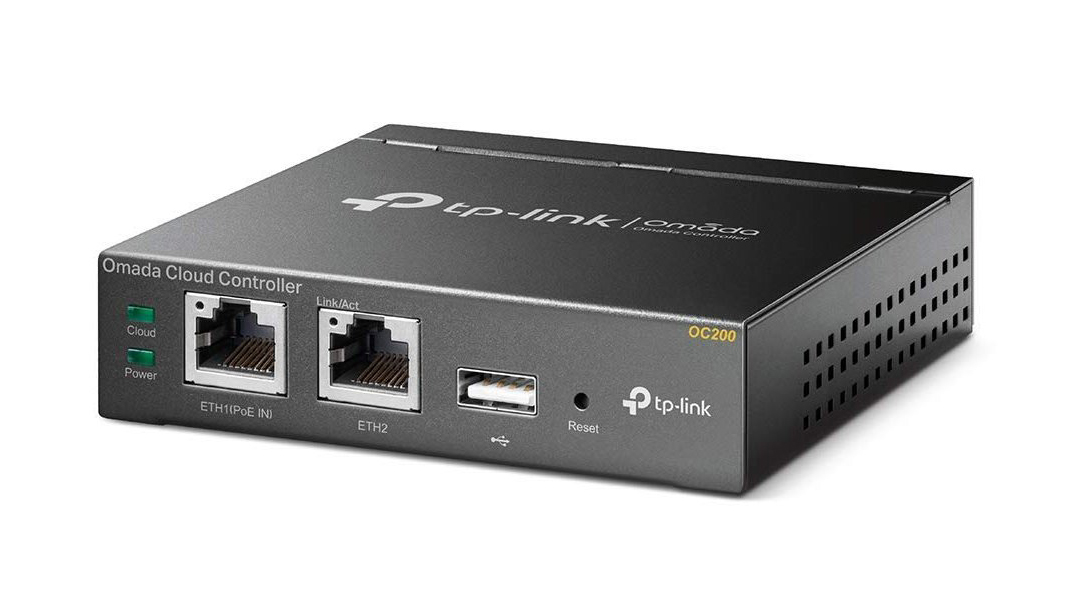TP-Link Omada OC200 Cloud Controller review: Cloud networking in a box
TP-Link’s OC200 brings plug and play wireless cloud management to SMEs at an incredibly low price


The TP-Link Omada OC200 is a clever little package that provisions cloud wireless management to TP-Link Omada APs in minutes. It’s easy to deploy, offers great management and monitoring features and at only £55, is an absolute bargain
-
+
Superb value; Swift deployment and configuration; Intuitive web console
-
-
No microUSB cable provided

SMEs that want instant cloud management for their wireless networks will love TP-Link's OC200 Cloud Controller. Plug this palm-sized package into the network and it'll spot all your standalone TP-Link Omada wireless APs and extend centralised cloud management to them all.
Equipped with a 1GHz Cortex A53 CPU, the OC200 runs the Linux version of TP-Link's Omada Controller Software. Another bonus of the cloud portal is any instances of the Windows version of this software can also be integrated with it.
The OC200 can be powered by its PoE/PoE+ LAN port or via its micro USB port, although you'll need your own USB cable as one isn't included. We chose the PoE route and had the OC200 ready for action in two minutes. On first contact with its web console, we followed the quick start wizard which asked us to provide a new administrative user and password, create our first managed wireless network and enable cloud access.
After creating our free TP-Link Omada cloud account, we added the OC200 by entering the key printed on its base and providing our admin credentials. There isn't much to see in the cloud portal; it merely lists all declared hardware and software controllers, each with a web link to their own management consoles.
The OC200 web console is identical to the Windows version and presents a list of all discovered APs. Before going any further, it's worth setting up some wireless SSIDs first as these will be pushed out to all managed APs.
For testing, we used two Omada EAP225 V3 ceiling APs plus an EAP225 Outdoor AP and all three appeared in the console as 'pending'. To provision our APs, we 'adopted' them after which they disabled their local web interfaces and took all wireless settings from the software.

The web console is well designed and opens with a customisable map page. We imported a JPEG map of our offices where we viewed each managed site, adjusted their AP locations with drag and drop and used heat maps to plan coverage.
Sign up today and you will receive a free copy of our Future Focus 2025 report - the leading guidance on AI, cybersecurity and other IT challenges as per 700+ senior executives
The console shows the status of all managed APs along with remote controls to flash their status LEDs, reboot them and pull up a table of radio and LAN traffic statistics. All our APs were running old firmware versions and we swiftly upgraded them directly from the console with a couple of mouse clicks.
Wireless networks can be easily managed by creating WLAN groups from the pop-up menu at the bottom of the console. Each group can contain multiple SSIDs each with their own encryption scheme, SSID masking, wireless client isolation plus upload and download rate limits.
Once provisioned, the member APs present all SSIDs so clients connect to the nearest one and roam freely across them as they move around. Band steering is supported and requires identical SSIDs created on both the 2.4GHz and 5GHz bands.
TP-Link's smart guest portal can use simple password, local user, voucher, RADIUS or Facebook authentication. It's easy to set up, can be customised with pictures, logos and an AUP and then applied to any SSID.
The site statistics page is very informative as it provides graphs, tables and pie charts of APs, SSIDs, client distribution and all wireless traffic over 24 hours or 30 days. The 'Quick Look' section highlights the most active clients and clicking on one pops up a window showing their connection history and traffic statistics.
We tried TP-Link's iOS app on our iPad and after logging into our cloud account, it listed all available controllers for quick selection. After choosing our OC200, it loaded a detailed statistics page with the same information as the controller portal along with options for managing all our wireless networks.
The OC200 is a clever little package that provisions cloud wireless management to TP-Link Omada APs in minutes. It's easy to deploy, offers great management and monitoring features and at only 55, is an absolute bargain.
Verdict
The TP-Link Omada OC200 is a clever little package that provisions cloud wireless management to TP-Link Omada APs in minutes. It’s easy to deploy, offers great management and monitoring features and at only £55, is an absolute bargain
1GHz dual-core Cortex A53 processor
1GB DDR3, 4GB eMMC
2 x 10/100 Ethernet
(PoE/PoE+, LAN)
USB 2
Micro-USB
Kensington lock
100 x 90 x 25mm (WDH)
Web browser management
Limited lifetime warranty
Dave is an IT consultant and freelance journalist specialising in hands-on reviews of computer networking products covering all market sectors from small businesses to enterprises. Founder of Binary Testing Ltd – the UK’s premier independent network testing laboratory - Dave has over 45 years of experience in the IT industry.
Dave has produced many thousands of in-depth business networking product reviews from his lab which have been reproduced globally. Writing for ITPro and its sister title, PC Pro, he covers all areas of business IT infrastructure, including servers, storage, network security, data protection, cloud, infrastructure and services.
-
 Google DeepMind CEO Demis Hassabis thinks this one area of the tech industry is probably in an AI bubble
Google DeepMind CEO Demis Hassabis thinks this one area of the tech industry is probably in an AI bubbleNews AI startups raising huge rounds fresh out the traps are a cause for concern, according to Hassabis
By Ross Kelly Published
-
 Everything you need to know about Google and Apple’s emergency zero-day patches
Everything you need to know about Google and Apple’s emergency zero-day patchesNews A serious zero-day bug was spotted in Chrome systems that impacts Apple users too, forcing both companies to issue emergency patches
By Nicole Kobie Published
-
 Ronald Richardson to lead Leaseweb’s global commercial strategy
Ronald Richardson to lead Leaseweb’s global commercial strategyNews The experienced executive has been named Leaseweb’s new CRO as the IaaS provider embarks on the next phase of its growth journey
By Daniel Todd Published
